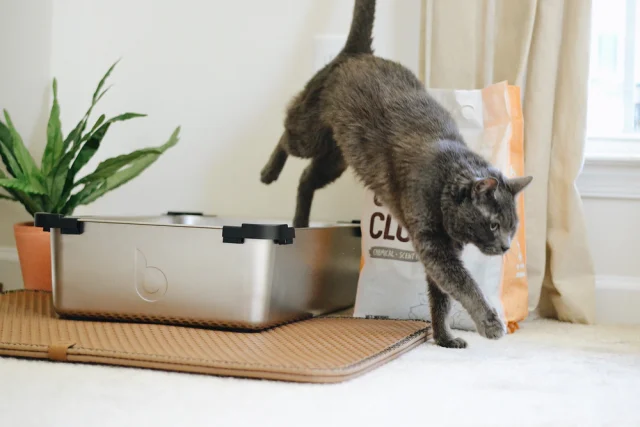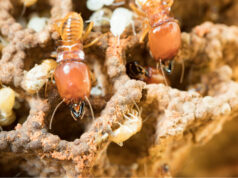
Bringing a new kitten into your home is an exciting time. You will want to prepare your home to welcome your new furry bundle of joy. While kittens are undeniably adorable, they can also be a lot of work. Making your home safe for your new kitten should be a priority.
The first few days in a new home can be stressful for your kitten. You will want to give them lots of attention and reassurance that they have arrived at their safe forever home.
Kittens are very similar to toddlers in that they have a lot of curiosity and can get into just about everything. You will need to kitten-proof your home to ensure that your new family member is safe and save you some headaches.
From gathering up a few furry toys to picking up a bag of Earthborn Holistic, you will need to do a few things before you bring your new kitten home. Let’s look at a few ways to prep your home for your new kitten.
Gather Your Kitten Supplies

You will need to pick up a few essential items for your kitten before you bring them home. While cats tend to be fairly self-sufficient, they will need your guidance and care when they are young. Here is a list of the essential items you should have for your kitten:
- Food and water dishes
- Holistic cat food
- Litter box
- Low-ash scoopable cat litter
- Toys
- Cat carrier
- Scratching post or mat
- Pooper scooper
- Cleaning products for accidents
- Cat bed
- Cat nail clippers
- Pet brush
Feeding Location

You want your kitten to learn where they can eat their food and drink water. You need to pick a convenient feeding location that will provide your kitten with a safe and quiet place to feed. Avoid high traffic areas that could make your kitten nervous while they are trying to have their meal. Your feeding location should be separate from the space where they sleep and go to the bathroom.
Kittens can be messy, so it’s recommended that you buy a pet feeding placement that will provide a non-slip surface for their feeding dishes and catch any spills before they hit the floor.
Litter Box

There are many styles of litter boxes to choose from. When your kitten is small, it’s recommended that you get a low-profile box that they can easily get in and out of. You may find a box with a lid to give them privacy and keep odors to a minimum, but the entrance needs to be low enough to easily enter the box.
Your litter box should be stored somewhere out of the way. Never have your litter box in the kitchen, as it can draw odors and bacteria. A corner of a spare room, the basement, or in the bathroom are good choices for your litter box.
You may want to get a mat or carpet to put underneath the entrance to your litter box.
Many kittens and cats will shake excess litter off their feet as they leave the box, leaving a mess on the floor.
House Safety

In the first few days, your kitten could be a bit overwhelmed by your home. You can start by sectioning off a few areas of your home by closing doors or putting up temporary gates. This will allow your kitten to explore their new home at their own pace. Take a close look at the areas that you have chosen and make sure they are safe. All cords or dangerous objects should be put up out of reach. Keep your kitten away from stairways until they are big enough to navigate them on their own.
Kitten-Proof

While an electrical cord may be an irresistible toy for your new kitten, it can be deadly. Part of the preparation for bringing your kitten home will be to “baby-proof” your house. Take a close look with a critical eye around your home and try to find anything that could harm your kitten or that they could harm. All electrical cords should be moved and brought up to a height where little kitten claws can’t reach them. You may want to buy cupboard locks as well. Kittens have a high level of curiosity, and are able to open doors and get into the smallest spaces.
Poisonous Plants

Your new kitten is likely to try a taste of your plants if they have the opportunity. While this is normal behavior, certain plants can be harmful to your kitten. It’s a good idea to find out what plants are poisonous and move them out of the way of your kitten.
Amaryllis, Azaleas, and Rhododendrons are all common houseplants that are poisonous to plants. Take some time to do some online research on which of your plants could pose a risk to your new kitten.
Create a Schedule

Your kitten will adjust to their new home better if they have a schedule. Your new kitten will be the responsibility of the whole family. Before you bring your kitten home, it’s a good idea to sit down as a family and outline who will take care of which responsibilities.
You can set a calendar schedule for feeding and changing out the litter box. Making arrangements for the care of your kitten before you bring it home will help eliminate conflicts later.
Welcoming a new kitten into your home is an exciting and joyful experience. Being prepared to have a new furry family member will help you and your kitten start making the adjustment together. Ensure that you have all the supplies you need, including a good quality holistic kitten food and lots of toys.
Take a look around your home and identify where there could be any safety issues. Kitten-proof the whole house so that your kitten will be safe when they arrive. Choose a spot for their feeding and their litter box and get rid of any hazardous plants. Finally, get ready to share in the wonder and joy that bringing a kitten into your home can bring to the whole family.












